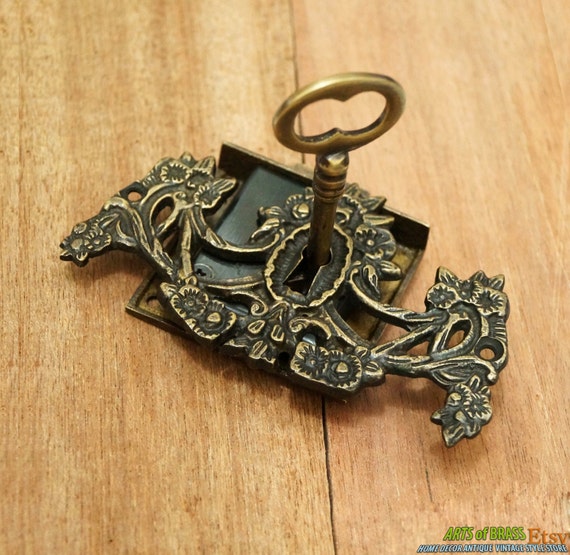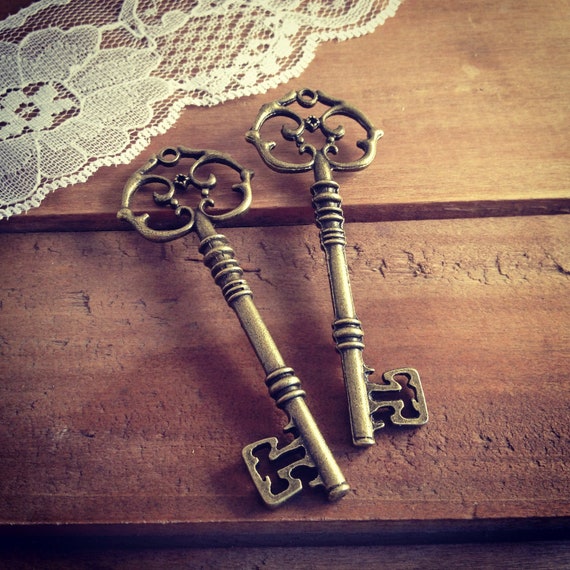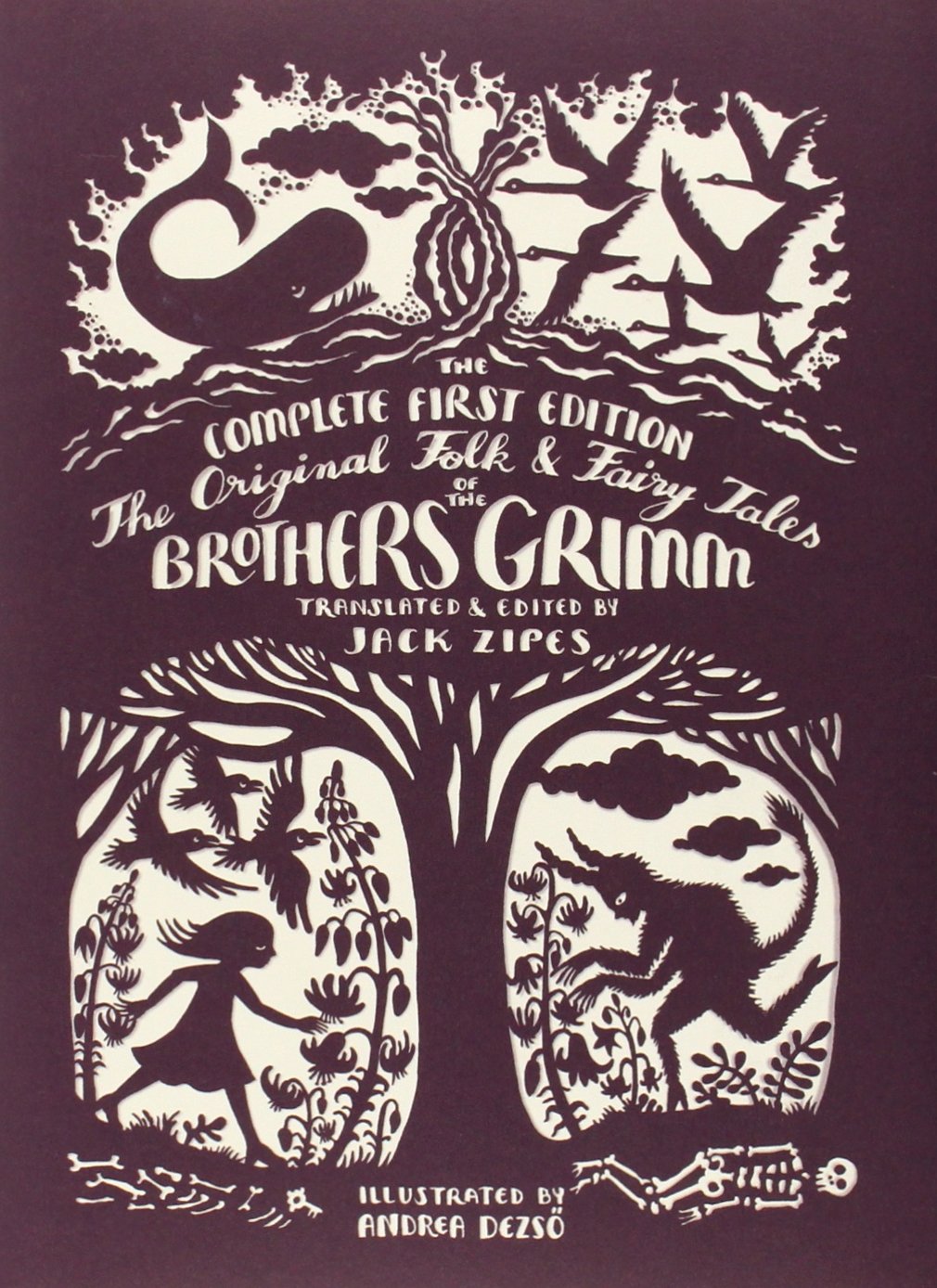This is the first time the complete first edition is available translated into English. Most "Complete Tales of the Brothers Grimm" you'll find these days mean "complete" as in "the last edition" (there were seven, spanning 45 years) which means there are many tales that were cut from the collection earlier on not included. So this is not just any Brothers Grimm collection! As I read Grimm fairy tales I often find myself wondering what the tales looked like before editing (especially after getting a little more insight into their collecting process after reading Wild Girl), and I can't wait to read tales side by side to compare and contrast!
Andrea Dezso's fabulous image for "Frog King," found in the book
One title that jumped out to me was seeing "Bluebeard" sitting among the other Grimm tales! One of the reasons some tales were cut from the first edition were because they were too "French," or, clearly descended from Perrault's tales and therefore not "authentically" German (as much as any of the tales collected by Grimms are actually authentically German...but that's a whole other discussion). Reading through the story, it's pretty clear that the story is very similar to Perrault's.
Jacob and Wilhelm Grimm
However, there are some notable differences, and frankly I like this version much better! It might not be technically considered "authentic" folklore by some, because it was a literary tale that was then retold orally. But, every tale had to have its beginning somewhere, and it's fascinating to see what German people would have done as they reinterpreted Perrault's classic!
A common critique of Perrault's heroine is that she's pretty helpless, especially compared to folk heroines of similar murderous husbands, like in "Fitcher's Bird," who rescue themselves and sometimes even resurrect the dead bodies in the chamber. The Grimms' heroine plays a more active part in her rescue. She is frightened by her husband's blue beard, and anticipating that something is wrong, she proactively pulls her brothers aside and tells them "Dear brothers, if you hear me scream, leave everything standing or lying wherever you are, and come to my aid." Once Bluebeard does demand her life, she stalls for time with him while screaming for her brothers from the roof (no sister Anne in this version. In Perrault's tale, the heroine is just lucky that her brothers were coincidentally going to visit that day).
Benjamin Lacombe
Although I dislike the implication that all physical anomalies or differences merit fear, I like to think that this heroine just sensed that something was off about the man. She's certainly no better than Perrault's main character, who still initially disliked the beard, but was swayed by his wealth and parties, not by a conviction about judging people by their looks.
Also, unlike Perrault's story, the wife doesn't find the bloody chamber during a large party, in which one might assume she could call for help and have the support of friends when her murderous husband returned-she was all alone.

The Grimms' heroine still opens the chamber because of curiosity, but that curiosity is never condemned. There are no descriptions of how desperately she runs to the door, and no morals added afterwards about the dangers of curiosity. In fact, her curiosity comes partly from intelligence. After she discovered the treasures hidden in the other rooms of the castle, she got to thinking:
"Since the key was made of gold, she believed that the most precious things were probably kept there." (Perrault's key, by contrast, is not necessarily of gold; all we know is that it is little).

Although it's ambiguous, it seems fairly clear that the boy is not condemned for being curious-coming across an abandoned key sort of gives the finder ownership (as a wife *should* have had ownership over the rooms in her own home), and it's seen as intelligent to deduce that there is a corresponding treasure. We, the readers, wait anxiously to find the contents of the mysterious box, or room.

In Zipes' words, from the book's Introduction:
"The final tale, 'The Golden Key,' is highly significant because it leaves readers in suspense and indicates that tales are mysterious treasures. We just need to right key to discover and appreciate them. In this respect, however, the tales that are to be rediscovered and will become known are never the end of our quest to understand the mysteries of life, only the beginning. And so it is with the unknown original tales of the Brothers Grimm. They are only the beginning."





I am jealous! This looks a wondrous book, and I do love Jack Zipes. I am so glad that you brought this to our attention. I have just about enough room on the bookshelves for one more book - if not something can go to make room for this! Really enjoyed your review and the images.
ReplyDeleteIt's such a great book for any Grimm fanatic! Although, I read a couple of reviews on Amazon that claimed that not all the tales were translated faithfully from the first edition. I don't have access to the originals nor would I know German if I did-I probably wouldn't take the reviewers seriously, but I did discover some issues with his translation of Villeneuve's "Beauty and the Beast." Still, even if there are a few issues, it sheds a lot more light on the first edition than any other book out there, and it seems like any potential problems are minor
DeleteIt's kind of bizarre to see those tales published in such a luxurious book, while as a German my experiences ith tales from the first edition come from reading them for free (but also poorly edited and without those gorgeous illustrations) on Wikisource.
ReplyDeleteAs for the Grimm version of Bluebeard: While it does have its perks, its huge disadvantage (and it shares that disadvantage with many tales from the first edition who weren't as heavily edited as the taes inlater editions) is that it imho is very boring. There's almost no chance for tension to build, because the pacing is so quick.
What I like much better about the Grimm version is the message (and I don't mean in regard to the tacked on moral by Perrault):
I actually think that Blue Beard has a really good message: There are situations in life which you can't solve on your own. Sometimes you will need help from others. But imho the Grimm version shows this much better, since it highlights that this help will not just appear on its own, but you will have to be pro-active, by relating your problems to people you trust and by actively asking for help instead of just waiting for it.
The blue beard as the reason for the heroine's distrust makes more sense when you don't see it as a sign of unattractiveness, but rather as a symbol for the supernatural. The beard is blue. That's not normal. It's perfectly reasonable for the girl to be creeped out.
As Walter Scherf has pointed out, The "Maiden Killer" tales have experienced a shift towards more rational thinking over time. While in most scandinavian tales the heroine gets kidnapped or forcefully married to a troll, more modern retellings (La Barbe Bleue being the most influential), have turned him into a (seemingly) normal human. The blue beard is the only signal that the antagonist could be not only inhumane, but also inhuman. (One version which origin I unfortunately can't remember takes the final logical step when in the end it is revealed that the villain's beard was merely dyed green).
I guess I didn't really notice the pacing, because I'm already familiar with the story anyway, but definitely many of the 1812 Grimm tales were more sparse, and later embellished. Which can sometimes be a good thing!
DeleteI totally agree about it having a good moral. When people get all upset about female characters getting rescued, I understand on one level, but the opposite isn't true either, that females should always single handedly solve all of their problems/be ashamed of needing help. A lot of fairy tales, featuring men or women, actually show teamwork-the main character is kind to animals and they repay them with help later on, etc.
I also like what you say about the blue beard being a hint that something isn't normal/is supernatural. And unlike Animal Bridegroom tales, the bride isn't "disgusted" by the beard, she is "frightened," a pretty significant distinction
Oh man! I've been wanting to get this new translation since it came out, but I can't find it anywhere (and I probably couldn't afford it anyway). It ticks me off that this is the first time the first edition has been translated to English, because if someone had just thought about it years earlier, there would be a public domain version for me to download for free. But no. Instead this is the first time it's been done, meaning that I actually have to find a copy of it.
ReplyDeleteI've been having to make do with Google Translate to read the first edition, and I HAVE read their version of Bluebeard. I agree that it's better than Perrault's version. The first time I read the moral to Perrault's version I nearly gagged! Sure, that wife had curiosity, but in a story where the character discovers that their husband is a mass-murderer because of their curiosity, I'd expect this character trait to be positive, rather than negative. I read an article online once that made a pretty good point. They said that even though it can be assumed that Bluebeard killed most of his wives because they looked in the room, there has to be some other reason why he killed his first wife. Clearly, this is just the kind of guy that likes to kill his wives, and he surely would have killed this one eventually even if she hadn't looked in the room. Plus, even if her curiosity WAS a bad thing, that still gives Bluebeard no right to kill her. He's clearly the character at fault in the story.
I know some scholars have some theories that this story is actually an allegory for adultery, or something like that, making Bluebeard the good guy. But I reject this theory, because I get kind of tired of scholars just assuming that every fairy tale has something to do with...that sort of thing. It's just too common a theory among fairy tales, and often feels contrived. Plus, an allegory should at least TRY to get the point of its message across. So I think if this story was supposed to be an allegory for the wife to commit adultery, that she would have been portrayed in a more negative light, and Bluebeard in a more positive light, not the other way around. It's kind of like if Chronicles of Narnia had made Aslan the bad guy and Jadis the good one. I wouldn't buy for a second that Aslan was supposed to be like Jesus! But Narnia clearly has Aslan as the good guy, so you know the allegory works. With Bluebeard, it DOESN'T work with the "allegory" theory, because it involves a bad guy symbolizing a good person, and a good character symbolizing a bad person.
I really wish Perrault hadn't added morals to his stories at all. It's a lot more fun when you can come up with the moral yourself.
The topic of Perrault's "moral" to Bluebeard is one that I've discussed a lot because it also really bothers me (not to mention "Griselda")...the general view scholars seem to take now is that Perrault was being tongue in cheek/satirical. But I had a hard time viewing it in that light, it seemed like if he was attempting satire he did it very poorly! But what really helped me understand it better was a commenter on a previous post who talked about how censored literature was in France at the time, and how anyone who criticized the King would have been banned, so anyone being critical would have to do it very carefully. The King was a notorious womanizer himself so Perrault could have been comparing him to Bluebeard but couldn't outright call him the bad guy without being exiled. This explanation makes the most sense to me
Delete